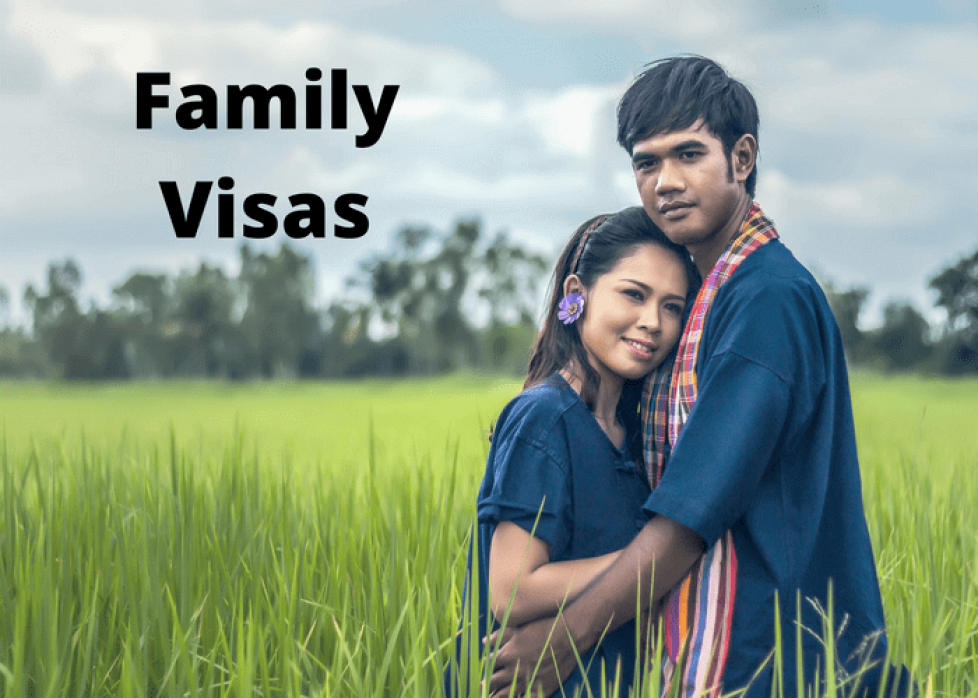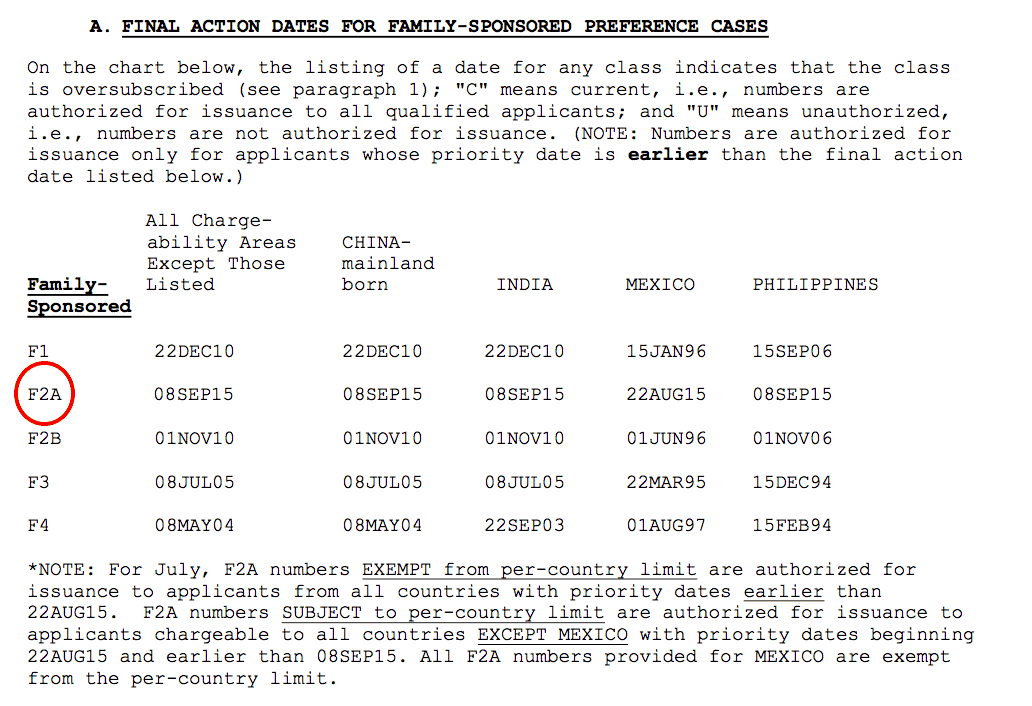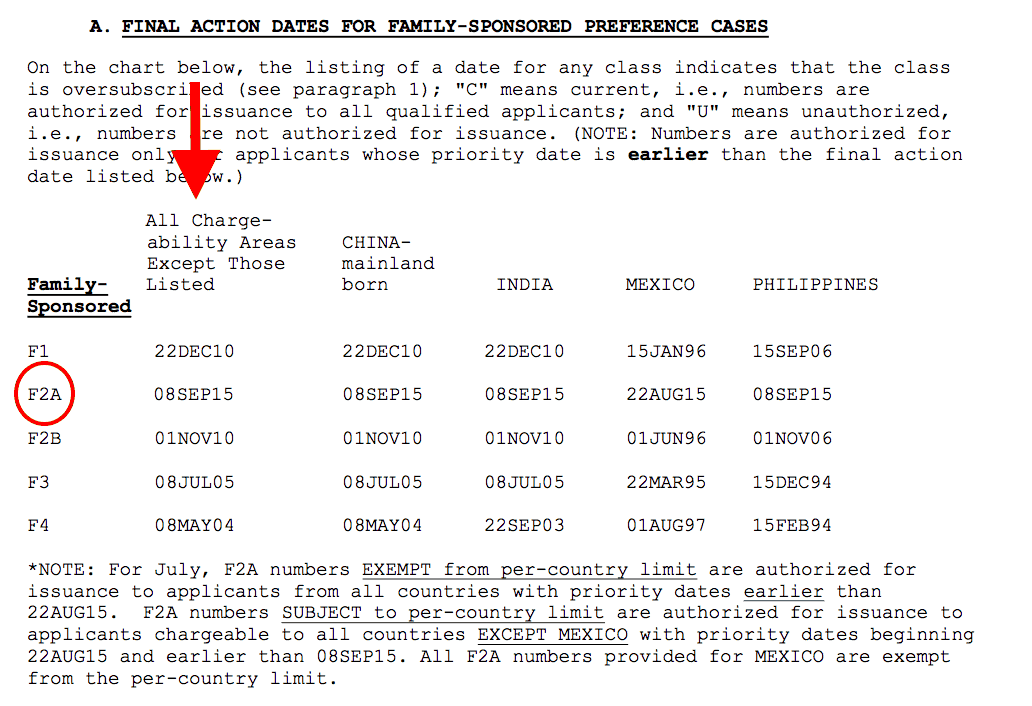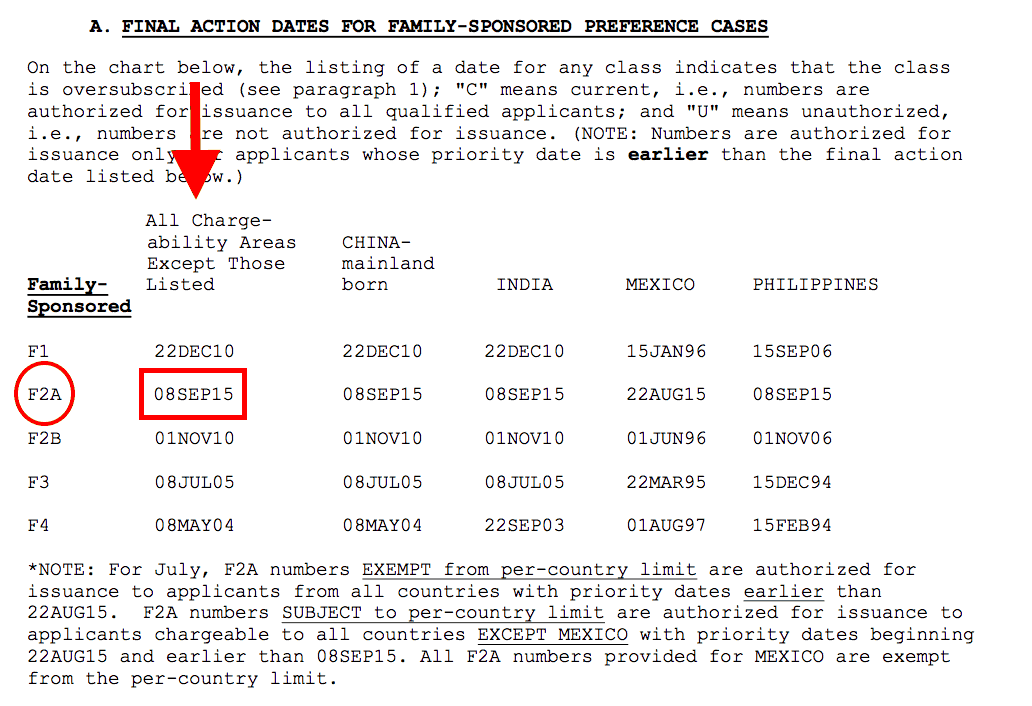
How do you bring a family member to the United States?
If you are a US citizen or permanent resident and want your family member to move to the United States and live here permanently with a green card, you will need to file a family visa petition. In most situations you will file form I-130 “Petition for Alien Relative.” As the US citizen or permanent resident, you are referred to as the “petitioner.” As the foreign national, your relative is referred to as the “beneficiary.”
If you are a US citizen, you can petition for your:
- Spouse;
- Parents (if you are at least 21-years-old);
- Children;
- Siblings (if you are at least 21-years-old).
If you are a permanent resident, you can petition for your:
- Spouse;
- Unmarried children.
Family visa petitions can be complex. An incorrect or incomplete filing can cause delays or result in denial of the petition. Before filing a family visa petition, contact an experienced immigration lawyer to make sure your relative is eligible.
How do I file an I-130 petition to get my relative a family visa?
The first step in a family visa petition is completing the I-130 Petition for Alien Relative form, which you can find here. Along with the I-130 petition, you will need to submit:
- Proof of your relationship to your relative;
- Proof of your lawful status here in the United States;
- Two passport photographs of you;
- Two passport photographs of your relative;
- USCIS filing fee in a check or money order made payable to US Department of Homeland Security.
If filing for your spouse, make sure to provide the following in addition to the above-mentioned documentation:
- Proof of valid marriage;
- Proof that all prior marriages were terminated (if either of you were married before).
NOTE: This is not a complete list of the documentation needed for a family visa petition. You will need this core documentation for every family visa petition but may also need other forms and documentation. Depending on your situation, you may need to file one or all of the following:
- Form I-130A (if filing for your spouse);
- I-864 Affidavit of Support;
- Waiver (if your relative has unlawful presence in the US or a criminal conviction);
- Court and police records for any criminal convictions;
- Prior immigration case records;
- Form I-485 (if your immediate relative is already in the US and eligible to adjust status).
Laws and forms often change and incorrect filing can have serious consequences. It is always a good idea to consult with an immigration lawyer prior to filing a petition to make sure you understand the requirements for your case.
What happens after I file the I-130 Petition for Alien Relative?
After correctly filing your family visa petition, USCIS will send you a receipt notice with the following information:
- Confirmation of the application fee payment;
- Your priority date;
- Your receipt number.
USCIS will then review the petition. If your petition was missing a portion of the required documentation, or USCIS wants additional proof of a relationship, it may issue a Request for Evidence.
What do I do if USCIS issues a Request for Evidence (RFE)?
Do not panic but do not procrastinate! If USCIS issues an RFE in your family visa case, you will have a certain amount of time to respond. USCIS will tell you the amount of time you have to respond in the RFE letter. Do not wait until the last minute to respond to an RFE. Often times, USCIS will ask for government documentation that may take some time to obtain. If you do not get started on the RFE soon, you may not be able to gather the necessary documentation in time. If you do not respond to the RFE or if you respond insufficiently, USCIS will deny your case.
When you have your RFE response organized and ready to send, make sure you include the RFE letter as a cover sheet. Tip: Make a copy of the RFE letter before sending the original back to USCIS. You will want to have it for your records. Make sure to mail your RFE response to the address indicated in the RFE letter. This address may be different from the address where you initially filed your petition.
What happens when USCIS approves my petition?
If your relative qualifies, you filed the petition correctly, and you provided all the necessary supporting documentation, USCIS will approve your petition. Congratulations! When USCIS approves a petition, it forwards the case to the Department of State’s National Visa Center (NVC) for further processing. When a visa is available for your family member, the NVC will gather additional documentation from you and your relative and forward the petition to the US embassy where your relative will have the visa interview.
Whether a visa is available for your family member depends on the person’s classification under US immigration law. If your family member is classified as an “immediate relative” for immigration purposes, a visa is available immediately. If you are a US citizen, the following are your immediate relatives:
- Spouse;
- Parents (as long as you are at least 21-years-old);
- Unmarried children under 21.
If your family member is not an immediate relative he or she will fall into one of the preference categories. Because there is a limited number of visas available each year for family members who are not immediate relatives, those who fall within the preference categories will need to wait for a visa. To figure out how long your relative needs to wait, you first need to find that family member’s preference category. Here are the preference categories:
First Preference
- (F1) Unmarried Sons and Daughters of U.S. Citizens. Remember, unmarried sons and daughters of U.S. citizens under 21 are immediate relatives. This category refers to unmarried sons and daughters of US citizens over 21.
Second Preference
- (F2A) Spouses and Children of Permanent Residents. To be a “child” for purposes of this category, the permanent resident’s son or daughter must be under 21-years-old and unmarried.
- (F2B) Unmarried Sons and Daughters (21 years of age or older). This category is pretty self explanatory. The permanent resident’s son or daughter must be unmarried but can be 21 or older.
Third Preference
- (F3) Married Sons and Daughters of U.S. Citizens. This category refers to any married son or daughter of a US citizen regardless of whether that person is under or over 21 years of age.
Fourth Preference
- (F4) Brothers and Sisters of Adult U.S. Citizens. This category refers to siblings of US citizens. Siblings often have to wait a long time to receive a visa.
Once you know your family member’s preference category, you can check the visa bulletin to calculate the approximate wait time for the visa.
How to Use the Visa Bulletin
First, using the above link, click on the most recent month of the Visa Bulletin available. From the next page, choose “View as Printer Friendly PDF.” This will open a PDF version of the visa bulletin. From there, scroll down to page 2 and look under “FAMILY-SPONSORED PREFERENCES.” There will find the categories listed above. Below the categories, you will see “A. FINAL ACTION DATES FOR FAMILY-SPONSORED PREFERENCE CASES.” This chart shows the dates of the petitions currently under processing for different categories. If your relative is from mainland China, India, Mexico, or the Philippines, you will use the processing times listed for your family member’s specific country. If your relative is from any other country, you will use the processing information under “All Charge-ability Areas Except Those Listed.” Here is an example of how to read the Visa Bulletin using the bulletin from July 2017:
Alex is a permanent resident from Russia. His wife, Maria, is still living in Russia. Alex filed an I-130 Petition for Alien Relative for his wife, which has a priority date of May 10, 2017. How long will Maria have to wait before a visa is available?
Question: What is Maria’s preference category?
Answer: F2A. As the spouse of a permanent resident, Maria is second preference category (F2A).

Since Maria’s category is F2A and she is not from mainland China, India, Mexico, or the Philippines we will look under the first column for her priority date.

The bulletin tells us that petitions with the priority date of September 8, 2015 are currently being processed.

Since Maria’s priority date is May 10, 2017, she will have to wait about 1 year and 8 months before a visa will be available for her. Remember: This wait time is only an estimate if processing continues at the current speed. A change in law, agency staffing, or procedure could mean a shorter or longer wait for Maria.
Can Alex do anything to get Maria a visa sooner?
Maybe, yes! If Alex is eligible to apply for US citizenship, he should do so. If he becomes a US citizen, his petition will be upgraded because Maria will then be the spouse of a US citizen. A spouse of a US citizen is an immediate relative and a visa is available immediately!
What to do now?
As you can see, the process of applying for a family visa can be very complex. As mentioned above, it is a good idea to at least consult with an immigration lawyer before filing. You may decide, after talking with a lawyer, that you will try and do the petition yourself. However, you will at least have the peace of mind that comes from speaking with an experienced professional. If you do decide to file a family visa petition, check out the 4 Most Common Affidavit of Support Mistakes to make sure you have sufficient income and the proper documentation to prove to the government you can support your family member.
Thank you for taking the time to learn about the family visa process! If you would like to talk with an experienced family visa lawyer, call Cole Enabnit at 503-749-7700 or write questions@pdximmigration.com
